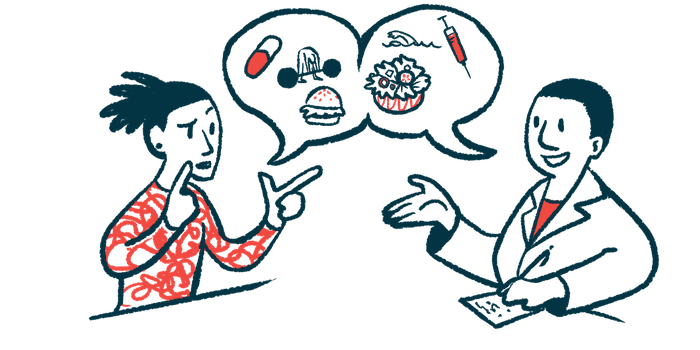Patients See Physiotherapy Benefits; Few Adopt Special Diet: Survey
SMA patients reported the need for more physiotherapy the more they used it

People with spinal muscular atrophy (SMA) feel the need to engage in physiotherapy exercises, which they see as a beneficial intervention, but most don’t adopt a special diet, despite frequent nutrition-related problems.
These are the findings of a survey by SMA Europe presented through a poster at the International Myology Congress, Sept. 12–15 in Nice, France, the umbrella group of patient organizations announced.
The poster’s title was “EUPESMA 2021 – European Patient Expectation Survey in SMA to understand patient expectations towards physiotherapy and nutrition.”
SMA is a genetic disease wherein the muscles become gradually weaker over time, leading to problems with movement, and in more severe types, breathing and swallowing.The disease is divided into five main types — 0, 1, 2, 3, and 4 — based on age at disease onset and the severity of symptoms, with type 0 the most severe and type 4 the mildest.
Treatment may involve medications to manage symptoms and support in the form of physiotherapy to help with movement and breathing. Problems with sucking, swallowing, and chewing can bring about poor nutrition, and many patients need feeding tubes and special diets.
Other interventions may include occupational therapy, speech therapy, and braces or surgery to treat spinal problems.
SMA Europe launched its European Patient Expectation Survey (EUPESMA) Series to learn more about what SMA patients think about the types of treatment available.
The surveys are “designed to map the experiences and to ascertain the needs and wants of people living with SMA, to help SMA Europe advocate for equal access to optimal treatment and care in Europe,” the researchers wrote.
The third survey, sent out in 2021, focused on patient experiences with physiotherapy and nutrition. It was carried out in collaboration with Tilburg University in the Netherlands and supported by the Cure SMA Industry Collaboration.
A total of 1,808 patients from 57 different European countries or territories completed the survey. Their mean age was 24.9 and little more than half (50.3%) were male.
The largest proportion of patients (44.6%) had SMA type 2 and nearly one-third (30.6%) had type 3 disease. SMA type 1 was the diagnosis of 19.1% of patients, while type 4 was reported in only a small proportion (0.7%).
The remaining patients (4.8%) were either unaware of their disease type or had rarer SMA types.
More than half (52.7%) were able to sit, but not walk (sitters). Some (18.5%) retained the ability to walk (walkers) and more than one-quarter (28.8%) could not sit (non-sitters).
Most patients (57.8%) with SMA type 1 were non-sitters; this proportion decreased to 29.5% with type 2 disease, 9.8% with type 3, and zero with type 4. More than 45% of patients with type 3 or 4 were walkers, while less than 6% of type 1 or 2 patients could walk.
Physiotherapy, diet ranked
More than one-third of patients with SMA type 3 or 4, about one-quarter of type 2 patients, and less than 10% of those with type 1 disease had not yet started any physiotherapy.
Among those who had initiated it, very few (less than 5% of each type) had decreased the number of hours spent in physiotherapy. Most either maintained or increased their time in treatment.
Patients reported that physiotherapy helped improve their health, strength, endurance, and flexibility, and shared a sense that physiotherapy was “beneficial to them,” the researchers wrote.
The more patients engaged in physiotherapy exercises, the more hours of it they thought they needed. On average, patients thought they needed about twice as much time of physiotherapy as they actually utilized (6.98 vs. 3.88 hours per week).
Nearly two-thirds (65.2%) of patients had nutrition-related problems, with the most common being constipation (more than 40%), followed by gas and taking too much time to eat (30% each).
Some (12.4%) reported using a feeding tube, with 69.3% getting their nutrition exclusively through one. In most cases (78.3%), the feeding tube was inserted into the stomach through the abdominal wall, while in 17.9% of cases, the tube was placed through the nose.
About half of patients had a healthy weight and the remaining were either underweight or overweight, according to their doctors.
Despite the high frequency of nutrition-related problems, only 20.3% reported following a special diet. About one-third were on a blended diet, one-quarter ate only small or soft food, and about 15% followed an amino acid diet. Others were on a vegetarian, vegan, or keto diet, among other options.
During the meeting, SMA Europe presented two other posters. One focused on what SMA patients expect from treatments and the other detailed the design of an upcoming study about how fatigue, pain, and poor mental health impact patients’ daily lives.








